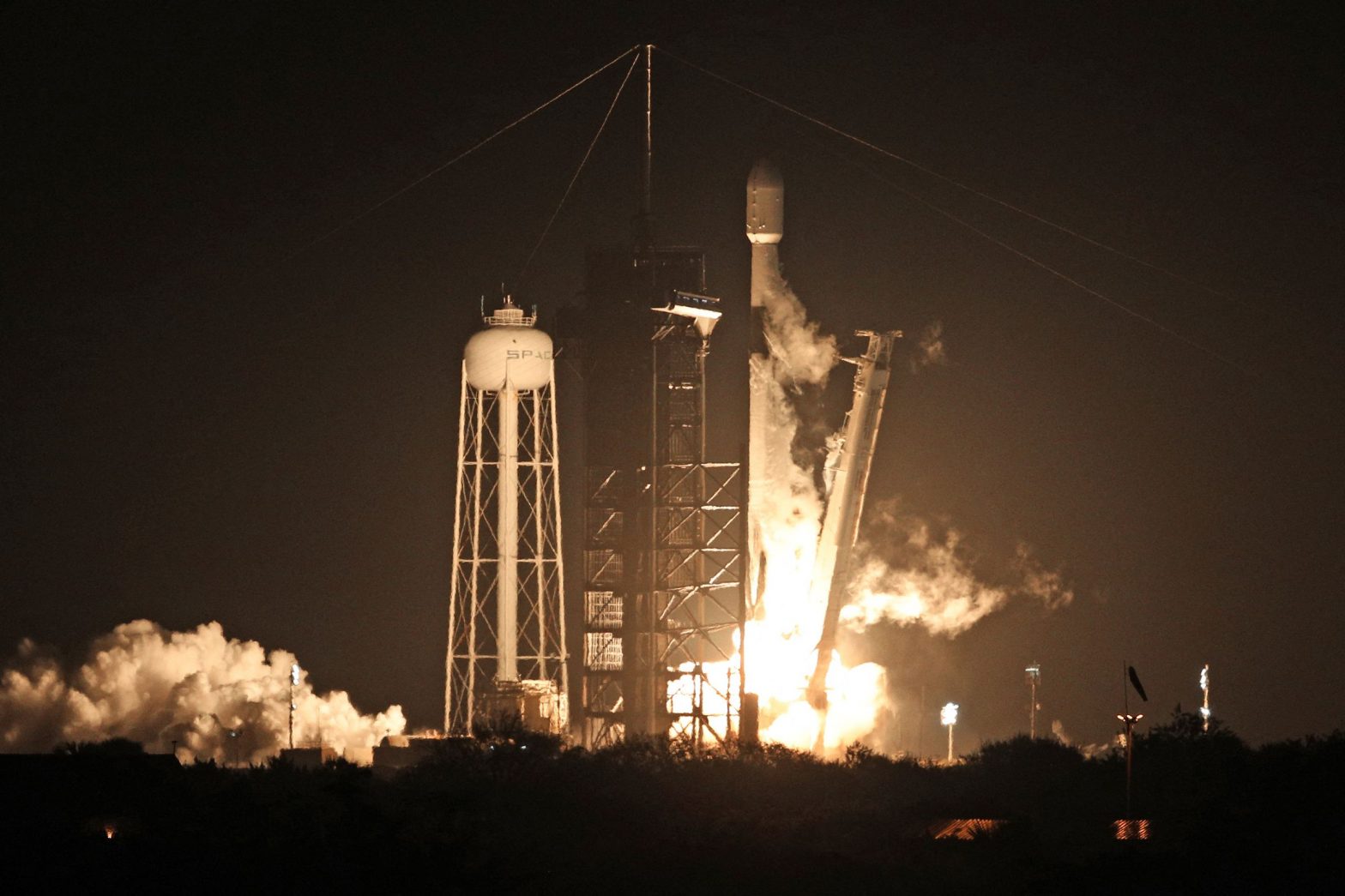/
The Nova-C lander rode into space atop a Falcon 9 rocket and is now making its two-week journey to the lunar south pole.
Share this story
:format(webp)/cdn.vox-cdn.com/uploads/chorus_asset/file/25287408/2003731596.jpg)
A robotic lunar lander built by private aerospace company Intuitive Machines was successfully launched by SpaceX on Thursday, with hopes of being the first American spacecraft to successfully touch down on the Moon’s surface since the 1972 Apollo 17 mission. The Nova-C lander named “Odysseus” was carried into orbit by a SpaceX Falcon 9 rocket, which launched from Cape Canaveral at 1:05AM ET on February 15th.
The launch was originally scheduled to take place on Wednesday but was delayed due to concerns regarding the temperature of the rocket’s methane fuel. Shortly after liftoff, SpaceX confirmed that the IM-1 mission’s Odysseus lander had been successfully deployed and that the first stage of the Falcon 9 rocket that delivered it into space had also landed back at Cape Canaveral. Odysseus is now making its way to the Moon’s south pole — a region of particular scientific interest due to the occurrence of water ice — where it’s expected to touch down on February 22nd.
The Nova-C spacecraft has a launch mass of 1,908 kilograms (4,206 pounds) and stands at four meters tall (around 14 feet) and 1.57 meters wide (five feet), described by NASA as a “hexagonal cylinder” on six landing legs. Intuitive Machines expects the lander to be active for 14 Earth days, after which the lunar night will likely force it to shut down as Odysseus wasn’t designed to withstand such a period of intense cold.
A successful lunar landing for Odysseus would not only mark a US return to the Moon for the first time in over 50 years — it would also be the first ever privately owned spacecraft to do so. The Astrobotic Peregrine lander launched by United Launch Alliance last month was also a contender for this achievement before a malfunction in the lander’s propulsion system left it unable to reach the Moon. Japan’s private Hakuto-R mission saw similar failure last April when contact was lost moments before the lander was set to touch down on the Moon, as did Israel’s Beresheet lander which crashed in 2019.
Like Peregrine, the IM-1 mission is carrying several science and research payloads for NASA’s Commercial Lunar Payload Services (CLPS) program, including a Laser Retro-Reflector Array (LRA) to help future spacecraft to make precision landings, and an LN-1 radio navigation beacon that could provide precise geolocation data for landers, rovers, and astronauts. These instruments are designed to collect key data about the lunar surface ahead of NASA’s Artemis program, which hopes to return humans to the Moon next year.
Odysseus is also carrying payloads from other customers, including the “EagleCam” CubeSat camera system built by students at Embry-Riddle Aeronautical University in Daytona Beach, Florida, which is designed to analyze dust plumes. Moon Phases — an art project by Jeff Koons comprised of 125 miniature Moon sculptures — is also aboard, which the artist claims will be the “first authorized artwork on the Moon.”
While the launch was successful, Odysseus still has to overcome the hurdle of touching down on one of the most difficult lunar regions to land on. The Moon’s south pole is permanently shadowed — great for ice, but less than ideal for navigating a lander. India became the fourth nation to achieve a soft landing near the region in August last year. Here’s hoping that Odysseus can follow suit and successfully nail its own touchdown.
